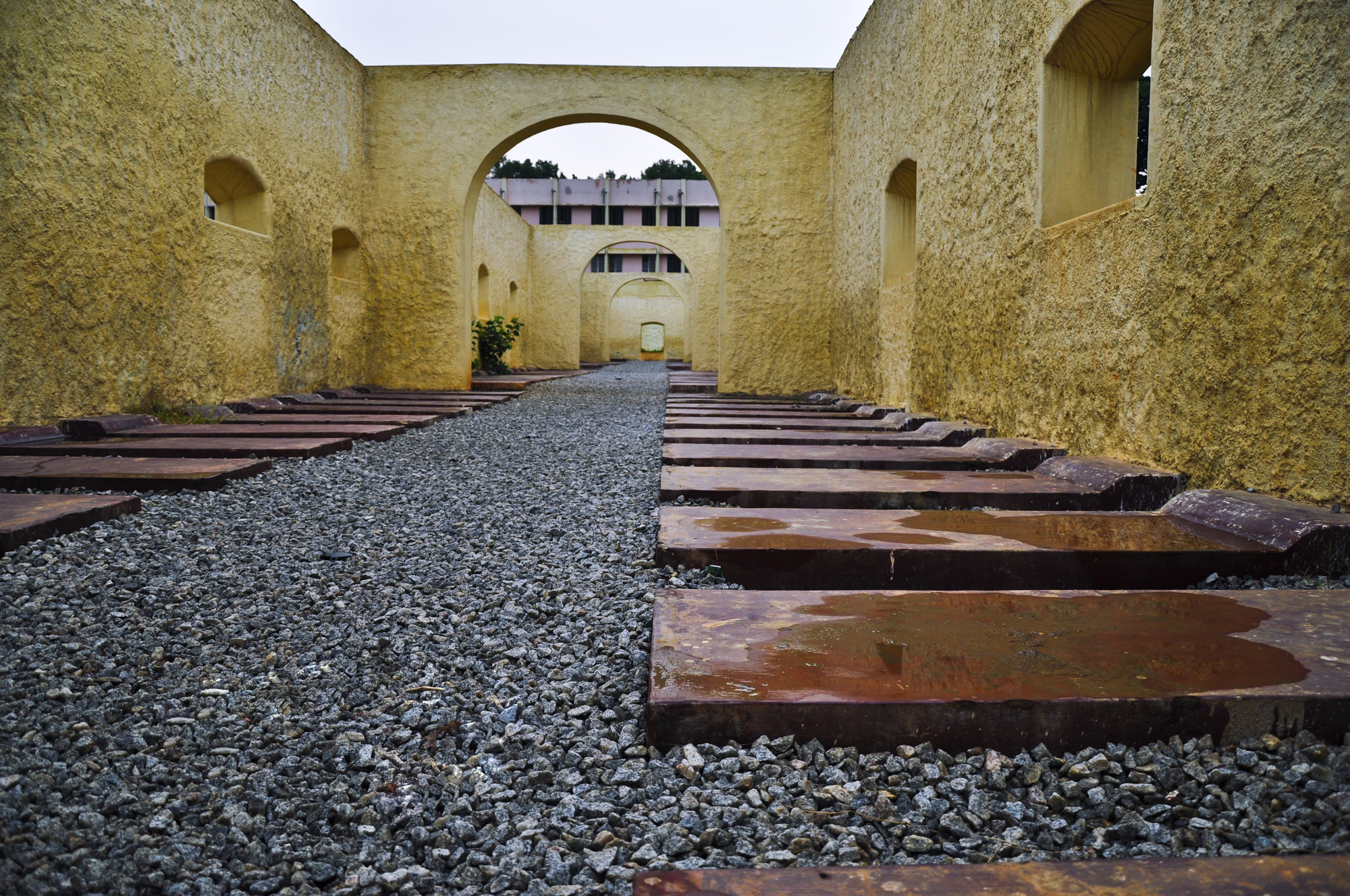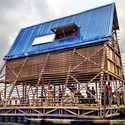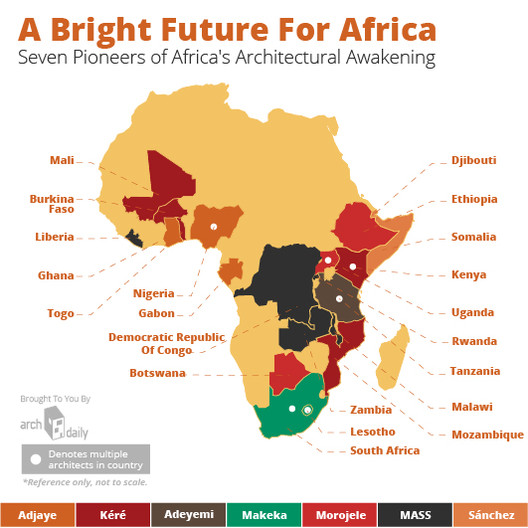
Lagos: The Latest Architecture and News
Africa Fintech Foundry Headquarters / MOE+ Art Architecture
The Tragic Human Cost of Africa's New Megacities

This article was originally published by Common Edge as "Tale of Two Cities: Unravelling the Brutal Backstory Behind Africa’s Emerging Megacities."
In the last two decades, the African narrative has changed phenomenally. The tired, age-old storyline—largely woven around the stereotypes of poverty, disease, and bloody civil wars—has been replaced with one celebrating the continent’s unprecedented economic growth and relative political stability. This new narrative is also about Africa’s gleaming skyscrapers, massive shopping malls, and ambitious “smart” cities being designed and built from scratch: Ebene Cyber City in Mauritius; Konza Technology City in Kenya; Safari City in Tanzania; Le Cite du Fleuve in DR Congo; Eko Atlantic in Nigeria; Appolonia City in Ghana, and others.
There are currently at least twenty of these new cities under construction in Africa and about twice that number in the works. These developments have permanently altered the continent’s urban outlook, and have offered it something different from the bland pastiche of colonial architecture that it was once known for. As a designer, I was initially excited by the quality of some of the architecture. Though I must admit that these new cities are eerie mimicries of similar developments in China, Singapore and even the UAE, and that they’re largely bereft of any cultural connection to Africa.
The World's Most Creative Neighborhoods: Metropolis Names Mumbai, Lagos and Lisbon Among Top Ten

From Yaba in Lagos to the suburb of Bandra in Mumbai, Metropolis Magazine provides a scenic tour around the world’s “most creative” neighborhoods. Spread across ten rapidly growing cities like Cape Town and Turin, the article provides a comprehensive glimpse into these lesser discussed hubs of creativity.
NLÉ's Makoko Floating School Reportedly Collapses Due to Heavy Rain

As reported by Nigerian news website NAIJ.com, the celebrated Makoko Floating School, designed by Nigerian architect Kunlé Adeyemi of NLÉ, has collapsed after heavy rain battered the city of Lagos. Photographs show the roof of the school still largely in tact, but sitting directly on top of the building's floating base of 256 plastic drums, as the lower levels and supporting structure appear to have failed completely.
This article has since been updated (June 8 2016) with a statement from NLÉ.
Toronto Takes Top Spot in Metropolis Magazine's Livable Cities Ranking

How do you compare cities? It's difficult to collapse millions of individual subjective experiences into a single method of comparison, but one popular technique used in recent years has been to judge a city's "livability." But what does this word actually mean? In their 2015 ranking of the world's most livable cities, Metropolis Magazine has gathered together a group of experts on city planning, urban life, tourism and architecture to break down "livability" into the categories they think matter and draw upon Metropolis' considerable urban coverage to produce one of the most thorough attempts to rank world series yet attempted. Find out the results after the break.
From Prisons to Parks: How the US Can Capitalize On Its Declining Prison Populations

Prisons are often seen as problematic for their local communities. After centuries of correctional facilities discouraging economic growth and occupying valuable real estate as a necessary component of towns and cities, many of these institutions have been relocated away from city centers and their abandoned vestiges are left as unpleasant reminders of their former use. In fact, the majority of prisons built in the United States since 1980 have been placed in non-metropolitan areas and once served as a substantial economic development strategy in depressed rural communities. [1] However, a new pressure is about to emerge on the US prison systems: beginning in 2010, America's prison population declined for the first time in decades, suggesting that in the near future repurposing these structures will become a particularly relevant endeavor for both community development and economic sustainability. These abandoned shells offer architects valuable opportunities to reimagine programmatic functions and transform an otherwise problematic location into an integral neighborhood space.
Why repurpose prisons rather than starting fresh? The answer to this question lies in the inherent architectural features of the prison typology, namely the fact that these structures are built to last. People also often forget that prison buildings are not limited to low-rise secure housing units - in fact, prisons feature an array of spaces that have great potential for reuse including buildings for light industrial activity, training or office buildings, low-security housing, and large outdoor spaces. These elements offer a wide variety of real estate for new programmatic uses, and cities around the world have begun to discover their potential. What could the US learn from these examples, at home and overseas?
7 Architects Designing a Diverse Future in Africa

As the legacy of the Cold War fades and Western preeminence gradually becomes a thing of the past, population booms in Asia followed by the growth of a vast non-western middle class have seriously challenged the Western perception of the world. The East has become the focal point of the world’s development.
If East Asia is the present focal point of this development, the future indisputably lies in Africa. Long featuring in the Western consciousness only as a land of unending suffering, it is now a place of rapidly falling poverty, increasing investment, and young populations. It seems only fair that Africa’s rich cultures and growing population (predicted to reach 1.4 billion by 2025) finally take the stage, but it’s crucially important that Africa’s future development is done right. Subject to colonialism for centuries, development in the past was characterized by systems that were designed for the benefit of the colonists. Even recently, resource and energy heavy concrete buildings, clothes donations that damage native textile industries, and reforestation programs that plant water hungry and overly flammable trees have all been seen, leaving NGOs open to accusations of well-meaning ignorance.
Fortunately, a growth in native practices and a more sensible, sensitive approach from foreign organizations has led to the rise of architectural groups creating buildings which learn from and improve Africa. Combining local solutions with the most appropriate Western ideas, for the first time these new developments break down the perception of monolithic Africa and have begun engaging with individual cultures; using elements of non-local architecture when they improve a development rather than creating a pastiche of an imagined pan-African culture. The visions these groups articulate are by no means the same - sustainable rural development, high end luxury residences and dignified civic constructions all feature - but they have in common their argument for a bright future across Africa. We’ve collected seven pioneers of Africa’s architectural awakening - read on after the break for the full article and infographic.
NLÉ Wins Competition to Design Financial Headquarters in Lagos

International design firm NLÉ has recently shared its competition-winning design for the financial headquarters of the microfinance bank Credit Direct Limited. Located in Lagos, Nigeria, in the Ikeja district, the bank’s design abandons the forbidding presence of most financial institutions for one that is open and welcoming. This decision not only invites clientele inside, but creates opportunities for adaptation to the tropical weather of Lagos.
Six Teams Studying Uneven Growth to Exhibit Proposals for Expanding Megacities at MoMA

As the culmination of a 14-month initiative to examine new architectural possibilities for rapid growth in six megalopolises - Hong Kong, Istanbul, Lagos, Mumbai, New York, and Rio de Janeiro - the Museum of Modern Art is preparing to open Uneven Growth: Tactical Urbanisms for Expanding Megacities on November 22. The exhibition will present mappings of emergent modes of tactical urbanism from around the globe alongside proposals for a bottom-up approach to urban growth in the highlighted cities by six interdisciplinary teams made up of local practitioners and international architecture and urbanism experts.
Curator Pedro Gadanho, in collaboration with the Austrian Museum of Applied Arts (MAK), states:
“The exhibition features design scenarios for future developments that simultaneously raise awareness of the prevailing inequalities in specific urban areas and confront the changing roles of architects vis-à-vis ever-increasing urbanization. Each team in the exhibition was asked to consider how emergent forms of tactical urbanism can respond to alterations in the nature of public space, housing, mobility, spatial justice, environmental conditions, and other major issues in near-future urban contexts.”
A synopsis of each team’s work, after the break.
How Kunlé Adeyemi "Engages the Local and Specific To Have a Powerful Effect on a Global Level"

Kunlé Adeyemi, the 38 year-old former disciple of Rem Koolhaas, made headlines last year with his Makoko Floating School, which enabled better access to education a slum community in Lagos. In this profile of Adeyemi and his Practice NLÉ Architects, originally published by Metropolis Magazine, Avinash Rajagopal explores what drives the young architect, explaining why he was selected as one of 10 designers in Metropolis Magazine's 2014 New Talent list.
When the Makoko Floating School was completed in March 2013, it received wildly enthusiastic critical acclaim from the international news media. The simple A-frame structure, buoyed by recycled plastic barrels in a lagoon in Lagos, Nigeria, was designed by NLÉ, a Lagos- and Amsterdam-based studio founded by the architect Kunlé Adeyemi. The project, intended as a model for how Lagos’s floating community could build simple, sustainable structures for themselves, subsequently faced a few challenges. One of the biggest was winning over local officials, who simply did not know what to make of such a building.
Interactive Infographic Tracks the Growth of the World's Megacities

With more than 7 billion people now alive, the greatest population growth over the last century has occurred in urban areas. Now, a new series of interactive maps entitled "The Age of Megacities" and developed by software company ESRI allows us to visualize these dramatic effects and see just how this growth has shaped the geography of 10 of the world’s 28 megacities. Defined as areas with continuous urban development of over 10 million people, the number of megacities in the world is expected to increase, and while Tokyo still tops the list as the world’s largest megacity, other cities throughout Asia are quickly catching up. Find out more after the break.
Malaca House / Mario Martins Atelier
Rem Koolhaas Sheds Light on Lagos
In this interview conducted by the Brigtje van der Haak maker of the documentary Lagos Wide & Close, Rem Koolhaas discusses his research on the urbanization of Nigeria's largest city, Lagos. While this research is as yet unpublished, Koolhaas discusses external influences on the city’s architecture, how his visits have affected his view of the profession, and Lagos’ future potential. The documentary by van der Haak, released on DVD in 2004, is an interactive exploration of Lagos from a multitude of scales. Now, it has been adapted for the web, and can be viewed in its entirety here!
Building Rehabilitation in Lagos / Vitor Vilhena Architects

-
Architects: Vitor Vilhena Architects
- Area: 2605 m²
- Year: 2012









































